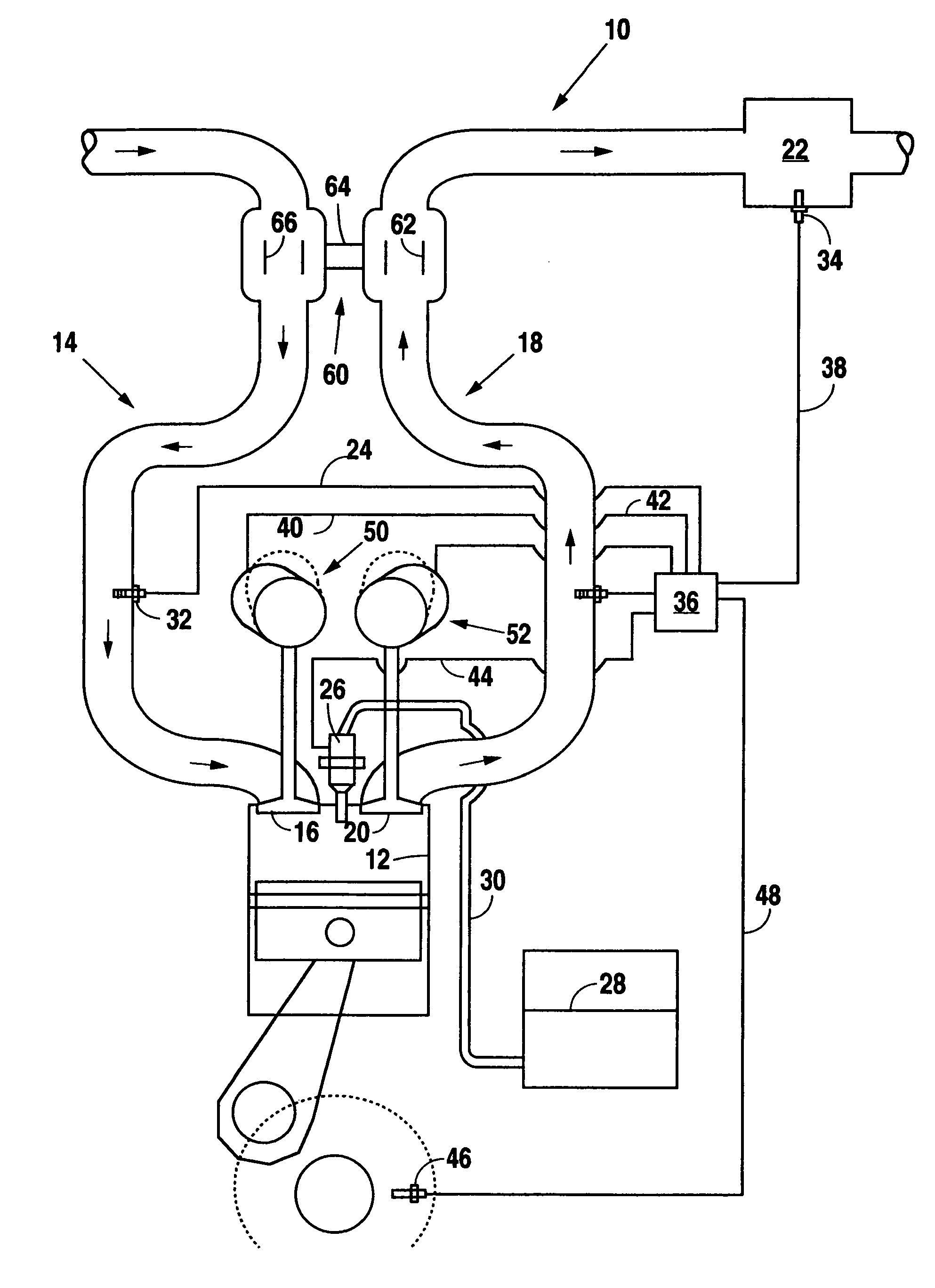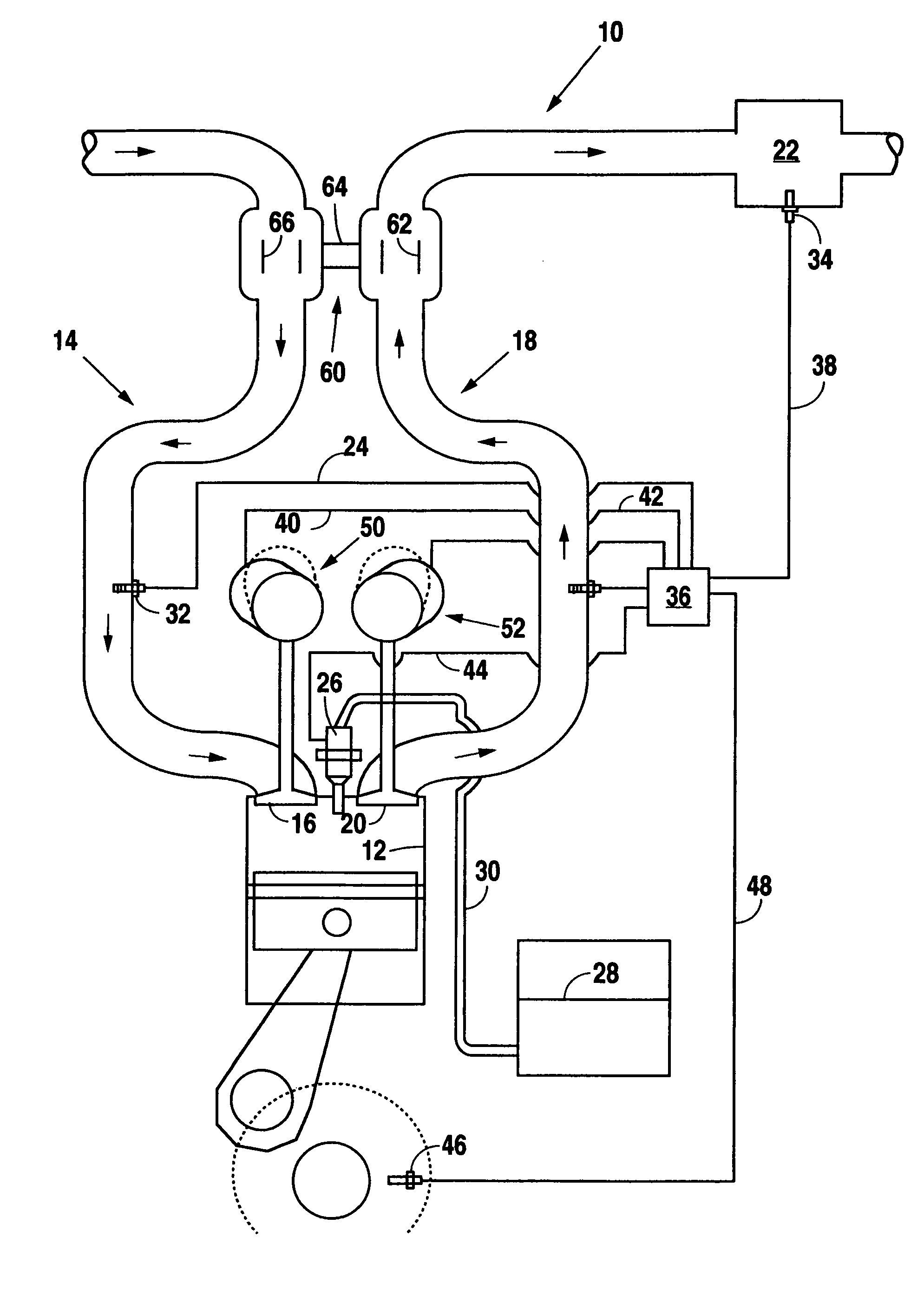Method for controlling exhaust gas temperature and space velocity during regeneration to protect temperature sensitive diesel engine components and aftertreatment devices
a technology of exhaust gas temperature and space velocity, which is applied in the direction of electrical control, machines/engines, non-mechanical valves, etc., can solve the problem that the temperature of exhaust gas can be so high as to damage some engine components
- Summary
- Abstract
- Description
- Claims
- Application Information
AI Technical Summary
Problems solved by technology
Method used
Image
Examples
Embodiment Construction
[0011]The present invention is directed to Diesel engines which have exhaust gas aftertreatment devices capable of, or requiring, regeneration to maintain their ability to effectively remove pollutants from the exhaust stream. In particular, lean NOx traps, or adsorbers, are effectively used in lean burn gasoline engines and in diesel engines. The adsorbers, which are typically incorporated into a catalyst washcoat, chemically bind nitrogen oxides during lean engine operation. After the adsorber capacity is saturated, the system is regenerated, and released NOx is catalytically reduced during a period of rich engine operation. Particulate traps typically capture particle emissions through a combination of surface-type and deep-bed filtration mechanisms, such as diffusion deposition, inertial deposition, or flow-line interception. Collected particles are removed from the filter, continuously with the aid of a catalyst to lower soot ignition temperature, or periodically through therma...
PUM
 Login to View More
Login to View More Abstract
Description
Claims
Application Information
 Login to View More
Login to View More - R&D
- Intellectual Property
- Life Sciences
- Materials
- Tech Scout
- Unparalleled Data Quality
- Higher Quality Content
- 60% Fewer Hallucinations
Browse by: Latest US Patents, China's latest patents, Technical Efficacy Thesaurus, Application Domain, Technology Topic, Popular Technical Reports.
© 2025 PatSnap. All rights reserved.Legal|Privacy policy|Modern Slavery Act Transparency Statement|Sitemap|About US| Contact US: help@patsnap.com


